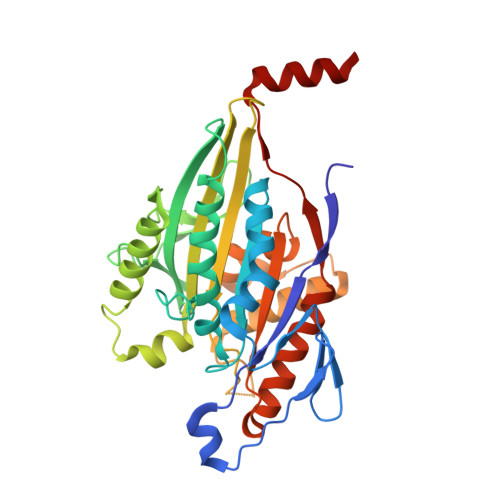Two conformations in the human kinesin power stroke defined by X-ray crystallography and EPR spectroscopy.
Sindelar, C.V., Budny, M.J., Rice, S., Naber, N., Fletterick, R., Cooke, R.(2002) Nat Struct Biol 9: 844-848
- PubMed: 12368902
- DOI: https://doi.org/10.1038/nsb852
- Primary Citation of Related Structures:
1MKJ - PubMed Abstract:
Crystal structures of the molecular motor kinesin show conformational variability in a structural element called the neck linker. Conformational change in the neck linker, initiated by ATP exchange, is thought to drive the movement of kinesin along the microtubule track. We use site-specific EPR measurements to show that when microtubules are absent, the neck linker exists in equilibrium between two structural states (disordered and 'docked'). The active site nucleotide does not control the position taken by the neck linker. However, we find that sulfate can specifically bind near the nucleotide site and stabilize the docked neck linker conformation, which we confirmed by solving a new crystal structure. Comparing the crystal structures of our construct with the docked or undocked neck linker reveals how microtubule binding may activate the nucleotide-sensing mechanism of kinesin, allowing neck linker transitions to power motility.
- Department of Biochemistry and Biophysics, University of California, San Francisco, California 94143, USA.
Organizational Affiliation:



















